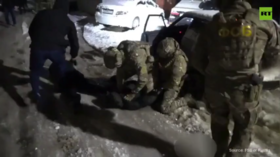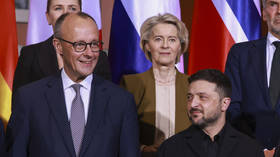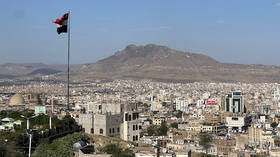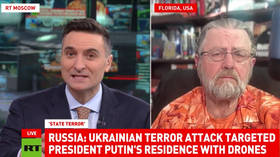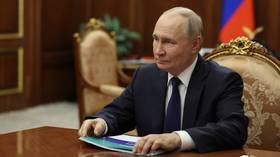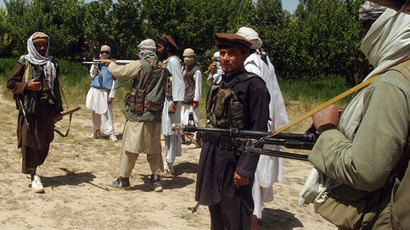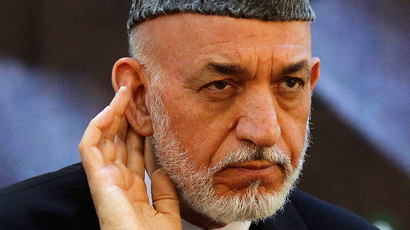Taliban attacks Kabul's presidential palace, CIA, ISAF HQ, Ministry of Defense
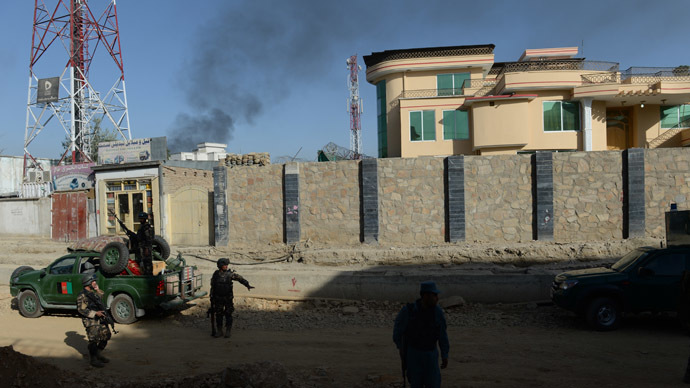
The Taliban has launched an attack in central Kabul, targeting the presidential palace, the CIA and ISAF headquarters, the Ministry of Defense, as well as an international hotel. All the assailants have been killed in the 90-minute showdown.
Local journalist Courtney Body told RT the attack started with a blast and heavy gunfire targeting the palace gate.
“What I saw from the outside of that gate is more of a blast wall around the green zone area, as there were giant holes in the concrete walls and the entire gate was destroyed. Apparently, one vehicle was able to get inside and one vehicle was stopped at the gate, and that’s when the attack began,” Body said.
Some 20 journalists, who were waiting at the palace entrance for a presser by President Karzai, were forced to run for cover as they heard the automatic rifle gunfire, and smoke from an explosion blanketed the area.
The palace guards, as well as guards from the adjacent CIA compound, reportedly fired back immediately after the attack on the west gate.
All the attackers were killed in the 90-minute firefight, according to Kabul Police Chief Mohammad Ayoub Salangi. One was killed when he detonated a bomb on his body, and three or four were killed by security forces, he added.
Three security guards were reportedly killed and one more was
wounded.
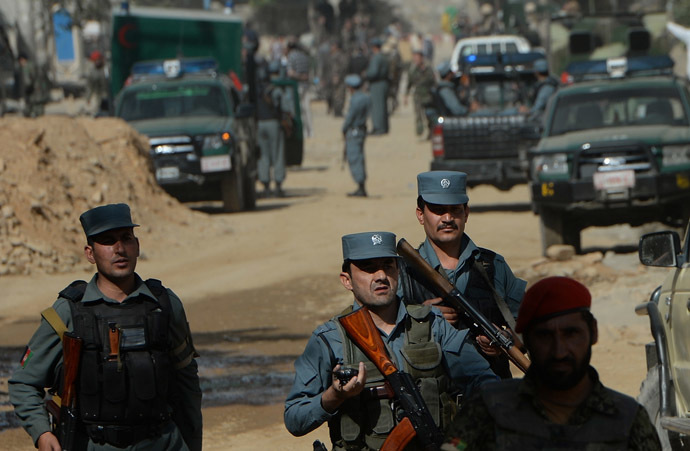
The police chief has also indicated that the damage could have
been much worse, as there were schools and offices just outside
the gate.
The insurgents were wearing military-style uniform and used fake
documents to make their way through the checkpoints in SUVs, but
one of the cars was stopped.
Reports indicated that Karzai was in the compound at the time,
but a palace official said he was safe.
The Taliban has claimed responsibility for the attack, saying that eight suicide bombers were able to reach the most secure area of Kabul.
“The brave mujahideen, with special tactics and help from inside, were able to reach their target with their weapons and cars,” Taliban spokesman Zabihullah Mujahid said in an email statement quoted by AP.
He said the insurgents carrying hand grenades, a machinegun and
rocket-propelled grenades were targeting the presidential palace,
the Ministry of Defense, as well as the Ariana Hotel, which is
known to house a CIA station.
The area of the city where the attack took place is the site of
several important organizations, including the United Nations
Assistance Mission in Afghanistan, as well as the headquarters
for the CIA and the NATO-led International Security Assistance
Force (ISAF).
Up to 10 blasts heard in Kabul, near Palace, CIA, ISAF HQ, UNAMA. Smoke rising over central #Kabulpic.twitter.com/9F54LmmdAb via @nohodge
— Harun Najafizada (@BBCNajafizada) June 25, 2013
The American Embassy in Kabul was reportedly placed on lockdown, with ISAF confirming a lockdown over its Twitter feed; other facilities in the area are said to be under lockdown as well.
The CIA building in central Kabul was reported to be on fire
shortly after the attack, according to 1TV News, a local news
broadcaster.
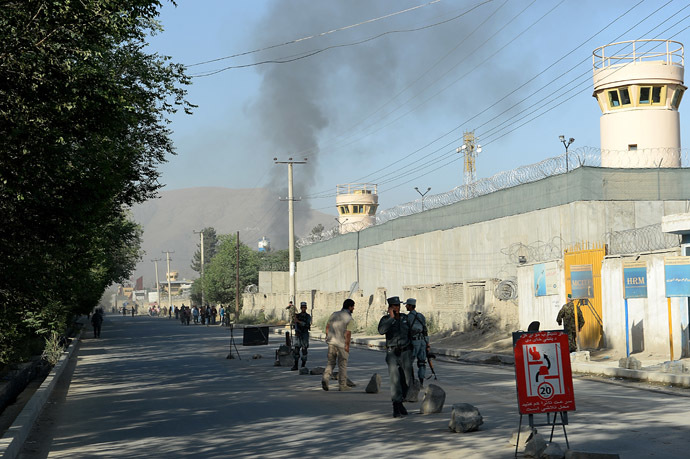
Ambassador James Dobbins, the US special envoy for Afghanistan
and Pakistan, was currently in Kabul after returning from Doha
over the weekend. The Afghan talks in Qatar have become stalled
since Taliban opened an embassy-like compound, declaring it the
'Political Office of the Islamic Emirate of Afghanistan.'
Taliban officials stated that the newly opened office in Qatar
was a response to calls by opponents for the launch of a
political process to reach some measure of peace, and end three
decades of fighting in Afghanistan.
But Deepak Tripathi, a research fellow at the University of Roehampton, says the new office doesn't represent peace at all.
“Anyone who thinks that they have stopped fighting simply because they have opened an office in Qatar is mistaken. The Taliban wants to remain a military force. The Taliban has fought with occupation forces over the past 12-13 years. The Taliban wants to exercise power after most of the American troops withdraw...Pashtun tradition is one of harassment and abatement of the enemy...so looking across history it is not surprising that tactics of harassment and revenge are going on,” Tripathi told RT.
Steve Zunes, a professor of international studies at the
University of San Francisco, says the Afghan army would never
succeed unless the Afghan people supported the country's
leadership in the first place.
“Even if they are very well trained, even if they have the very best equipment, the strength of the Afghan government <…> doesn’t have credibility with the Afghan people. While the Afghans don’t subscribe to the Taliban’s ideology, they are very frustrated with corruption, inaptitude, and arbitrariness of the Afghan government, including the ongoing repression. They’re resentful of the foreign presence to prop up this government. And it’s this kind of environment that leads to the rise of extremists. So it’s not a security question.”



